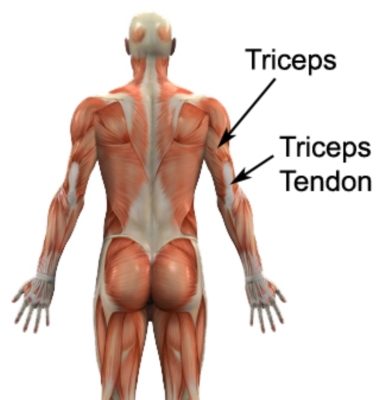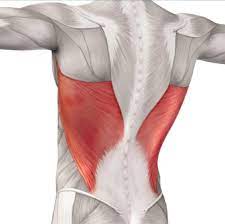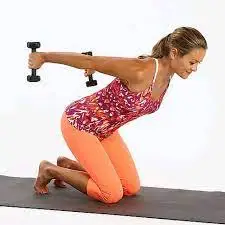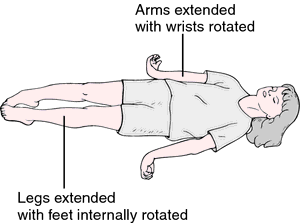Exercises for the Vertigo
Introduction
- Vertigo (feeling off-balanced) may have a significant effect on life. The symptoms, as well as sensations of vertigo, can come on suddenly, or the patient may experience them off & on as weeks go by, further affecting daily activities.
- The condition can be owing to a number of several most often it stems from problems with the inner ear, the circulatory system, or the nervous system. Benign paroxysmal positional vertigo (BPPV; a sudden feeling that the patient is spinning), Meniere’s disease (inner ear problem that causes dizziness or even ringing of the ears), & labyrinthitis (inflammation of an inner ear) may all cause the symptoms of vertigo to develop.
- Vertigo may leave the patient feeling like the world is spinning. This can even make the patient nauseous or sweaty, which can lead to headaches as well as vomiting. While most symptoms improve after several days or weeks, when present they may feel overwhelming.
To help the patient cope with vertigo & its symptoms, try to focus on exercises that strengthen the balance.
Exercises to Help with Vertigo
- Repetitive motions may help the brain, as well as the body, overcome the confusing signals of vertigo. It can also assist the patient in managing a sudden onset of dizziness & motion sensations.
- When the patient begins these exercises for vertigo, start slowly & understand that initial reactions may make the patient feel worse.
- Make sure that the patient completes these exercises individually, taking breaks between each one. Speak with the doctor before beginning any of these exercises, & let them know if the vertigo symptoms become more serious or if the patient experiences any new symptoms.
Brandt-Daroff Exercise
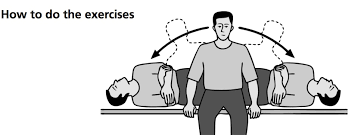
The exercise assists in decreasing the symptoms of vertigo, & it is most often used for BPPV as well as labyrinthitis.
Step 1: Sit at the end of the bed. When ready, turn the head 45 degrees to the right.
Step 2: Lie down on the left side & remain still for 30 seconds until dizziness fades.
Step 3: Sit up & wait 30 seconds.
Step 4: Turn the head 45 degrees to the left.
Step 5: Lie down on the right side and hold the position for 30 seconds until dizziness fades.
Step 6: Sit up & wait 30 seconds.
Repeat the process five times, twice a day or as comfort allows.
Marching in Place Exercise
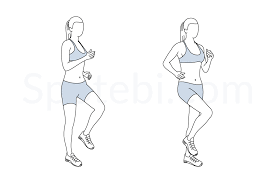
Marching in place may assist the patient with balance while standing, which acts as the stepping stone for more advanced movements.
Step 1: Stand near the wall or corner, or place the chair nearby. Place the arms by the side.
Step 2: Lift the right knee, followed by the left knee as the patient marches. Try to raise the knees as high as comfort allows.
Step 3: March in place 20 times.
Repeat the exercise two times in one day times, & try to extend each set to 30 marching steps.
Turning in Place Exercise
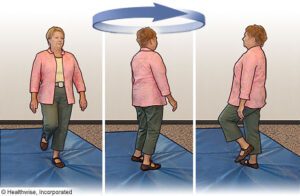
Turning in place is a more advanced exercise compared with marching in place. Make sure the patient has a chair or sturdy walker nearby in case he/she feels dizzy.
Step 1: Stand straight with the arms at the sides.
Step 2: Slowly turn left in the half-circle, equal to 180 degrees.
Step 3: Stop moving & stand motionless for 10 to 15 seconds.
Step 4: Slowly turn the right in the half-circle. Stand still for 10 to 15 seconds.
Repeat the exercise five times. As the patient completes each round, favor moving in a direction that makes the patient feel dizzier.
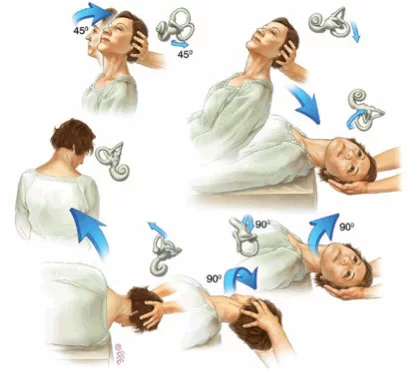
This Epley maneuver is one of two exercises, called canalith repositioning procedures, designed specifically for BPPV. Follow the exercise
maneuver only if the patient is experiencing BPPV.
Step 1: Sit at the end of the bed as well as turn the head 45 degrees to the right.
Step 2: Maintain that position & lie back with the head reclining as well as the shoulders resting on a pillow. Hold for 30 seconds.
Step 3: Turn the head 90 degrees to the left & wait for 30 seconds.
Step 4: Turn the head as well as the body 90 degrees to the left until the patient is facing down on the bed. Hold for 30 seconds.
Step 5: Sit up on the left side.
These steps apply to the right ear. For left ear issues, reverse all directions:
Step 1: Sit at the end of the bed & turn the head 45 degrees to the left.
Step 2: Maintain that position as well as lie back with head reclining & shoulders resting on a pillow. Hold for 30 seconds.
Step 3: Turn the head 90 degrees to the right & wait for 30 seconds.
Step 4: Turn the head as well as body 90 degrees to the right until the patient is face down on the bed. Hold for 30 seconds.
Step 5: Sit up on the right side.
Repeat the exercise three times or as comfort allows.
Semont Liberatory Maneuver
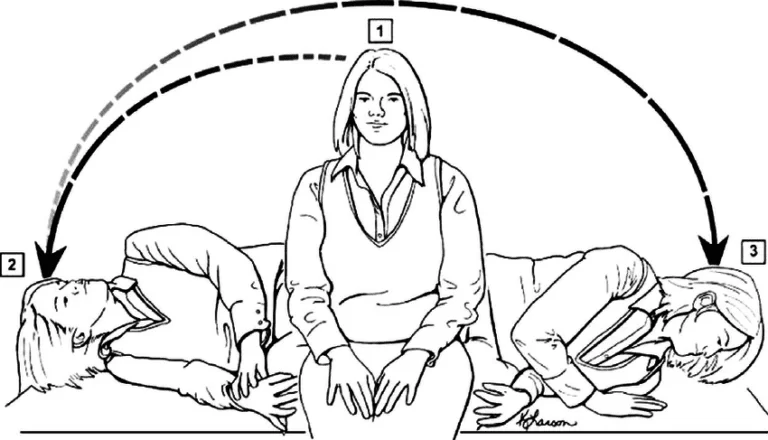
A Semont Liberatory maneuver is a second exercise procedure for treating BPPV.
Step 1: Sit at the end of the bed & turn the head 45 degrees to the right.
Step 2: Lie down on the left side with the head tilted upright, as well as hold still for 60 seconds.
Step 3: In one motion, move from the left side to the right side. Make sure the face is facing the bed. Remain still for 60 seconds.
Step 4: Come back to the sitting position and sit for 5 minutes.
These steps apply to the left ear. For the right ear issues, reverse all directions:
Step 1: Sit at the end of the bed & turn the head 45 degrees to the left.
Step 2: Lie down on the right side with the head tilted upright, and hold still for 60 seconds.
Step 3: In one movement, move from the right side to the left side. Make sure the face is facing a bed. Remain still for 60 seconds.
Step 4: Come back to the sitting position and sit for 5 minutes.
Repeat the exercise three times or as comfort allows.
Safety Considerations
When completing standing exercises for vertigo, stand near the wall or even handrail, or set up a chair, walker, or another personal assistance device in case the patient loses balance. If the patient has a higher risk of falling, ask someone to stand close by as he/she works on these exercises.
Foster maneuver
This Foster maneuver, sometimes called a half somersault, is one of the easiest exercises for vertigo. This does not require the patient to be in the bed or have assistance from another person.
Follow these directions if the patient has left-ear BPPV. If the patient has right-ear BPPV, do these steps on the right side:
Kneel as well as place your hands on the ground. Tilt the head up & back. Wait until any dizziness passes. After that, place the forehead on the ground, tucking the chin toward the knees. Next, turn the head 45 degrees to face the left elbow. Hold for 30 seconds.
Keeping the head 45 degrees, raise the head until it is level with the back and shoulders as well. Hold for 30 seconds.
Raise the head to the fully upright position.
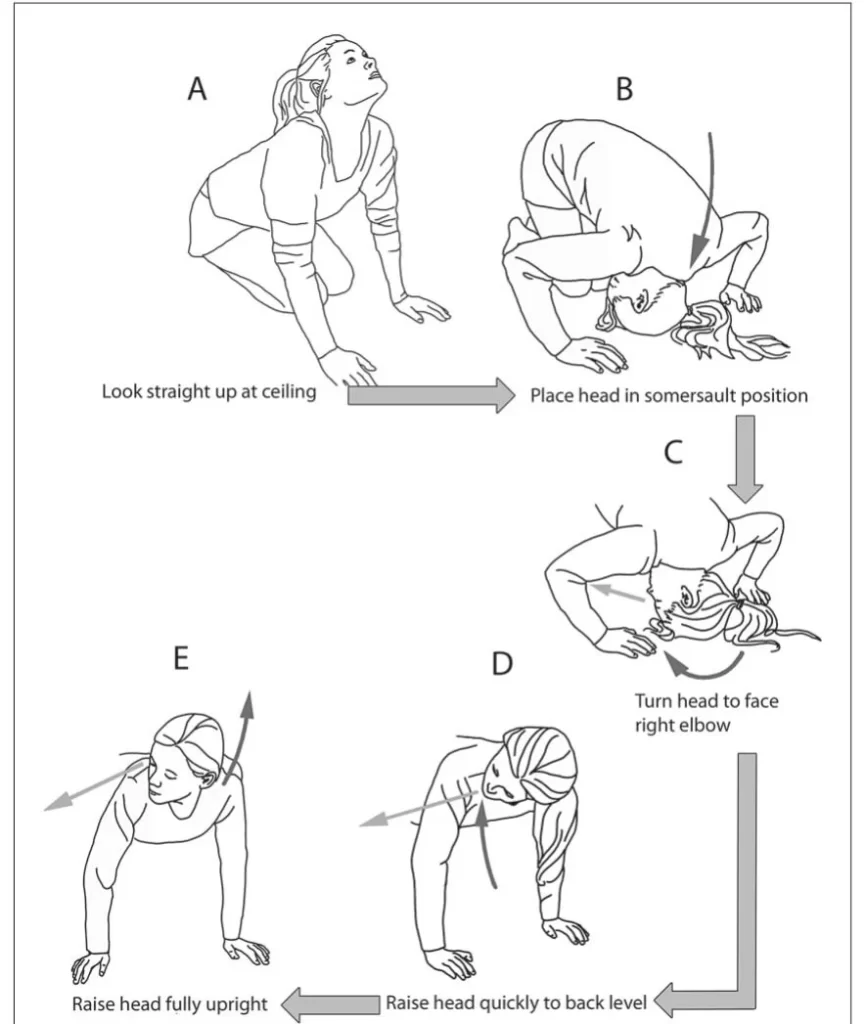
A quick note about safety
It is not uncommon for these exercises to temporarily cause dizziness, even after doing just a single motion.
To do these exercises safely, take the time. Wait 30 seconds or until the dizziness passes, between each motion. The patient should also wait at least 30 seconds before standing up.
It is also important to get a formal diagnosis before trying these exercises. If the vertigo is not caused by BPPV, these moves can cause even more problems.
The healthcare provider can also recommend the patient to do these exercises more or less frequently, depending on the needs. They can also show the patient some modifications if he/she has limited mobility.
Cawthorne Head Exercises
The Cawthorne exercises also called Cawthorne-Cooksey exercises, which involve moving the head as well as eyes around to engage control over them. It can help the patient situate themselves in the environment.
These exercises, a type of vestibular rehabilitation therapy, might also involve coordinating hand-eye movements to regain a sense of balance.
These exercises are easy, free, & only require a little time on the part.
These exercises are generally effective for treating vertigo. The patient can practice the motions by himself & in the comfort of their own home.
Eye movement
Without moving the head, move the eyes from side to side, and then up & down.
Repeat 10 to 20 times. Start slowly, and try to move faster.
Cervical flexion(looking down)
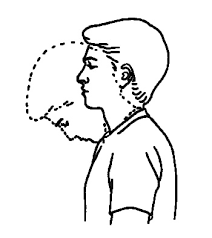
To start with, a patient should sit upright with the shoulder blades squeezed together. After that, a physical therapist should instruct a patient that bend the head forward until he/she feels a stretch behind the neck. Go as far as comfortable and then return to the embarking position.
Remember to perform this at a relatively moderate pace a patient is trying to get the joints/muscles moving). If a patient is feeling severe pain then a clinician has gone too far; the mild to moderate dull ache is normal in the beginning. Do it ten repetitions in a session. Do three sessions in a day.
Cervical right-side rotation(looking over the shoulder)
First of all, a physical therapist should tell a patient to sit upright with the shoulder blades squeezed together, & hold onto a chair with both hands to fix the shoulders down. Next, a physical therapist instructs a patient to rotate the neck towards the right side so the patient is looking over the right shoulder. Go as far as comfortable & then come back to the starting position. Remember to perform this at a relatively moderate pace (a patient is trying to get the joints/muscles moving). If a patient feels severe pain a physical therapist has gone too far; the mild to moderate dull ache is normal at the start. Do it ten repetitions in a session. Do three sessions per day.
Cervical left side rotation(looking over the shoulder)
To start with, the therapist should tell the patient to sit upright with the shoulder blades squeezed together, & hold onto the chair with both hands to fix the shoulders down. Next, the therapist instructs the patient to rotate the left side to a neck towards the left side so the patient is looking over the left shoulder.
Go as far as comfortable & then come back to the beginning position. Remember to perform this at a relatively moderate pace (the patient is trying to get joints/muscles moving). If the patient feels severe pain the physical therapist has gone too far; the mild to moderate dull pain is normal at the embarking. Do it ten times per session. Do three sessions in a day.
Cervical left side lateral flexion(ear to shoulder)
First of all, a physical therapist tells a patient to sit upright with the shoulder blades squeezed together as well as hold onto the chair with both hands to fix the shoulders down. Next, a clinician gives a command to a patient that bends a neck to the side bringing the left ear towards the left shoulder. Go as far as comfortable, & next come back to the beginning position. Remember to perform this at a relatively moderate pace (a patient is trying to get the joints or even muscles moving). If a patient feels severe pain a physical therapist may have gone too far; the mild to moderate dull pain is normal at the embarking phase. Do ten repetitions in a session. Do three sessions in a day.
Cervical right-side lateral flexion(ear to shoulder)
To start with, the therapist tells the patient to sit upright with shoulder blades squeezed together & hold onto the chair with both hands to fix the shoulders down. Next, the physiotherapist gives the command to the patient that bends the neck to the side bringing the right ear towards the right shoulder. After that, a patient should go as far as comfortable and then come back to the embarking position. Remember to do this at a relatively moderate pace (the patient is trying to get the joints or even muscles moving). If the patient feels severe pain, a physical therapist may have gone too far; the mild to moderate dull pain is normal at an initial phase. Do ten repetitions per session. Do three sessions in a day.
The cervical extension(looking up)
To begin with, a patient should sit upright with the shoulder blades squeezed together. Then, a physical therapist should instruct a patient that looks up towards the ceiling & stretch the head backward. Go as far as comfortable and then come back to the starting position. Remember to perform this at a relatively moderate pace (a patient is trying to get the joints/muscles moving). If a patient feels severe pain then a physical therapist has gone too far; the mild to moderate dull ache is normally felt initially. Gradually pain & the range of motion should improve the more a patient does the exercise over the coming days or weeks. Repeat it ten times in one session. Do three sessions in a day.

Toe touches
First of all, take a comfortable position and then bend over to touch the toes, staying aware of the head movement at all times.
Keep the eyes open & let the head, as well as body, follow your fixed gaze. Do this exercise slowly five to ten times.
Shoulder shrugs
First of all, the physical therapist instructs the patient to take a relaxed position, such as sitting on the table. Then, shrug the shoulders up and down as well.
Repeat the exercise ten to twenty times in a seated position.
Sit to stand
Move from the seated position to the standing position.
Start slowly, with the eyes open. Over time, the patient can try this exercise with the eyes closed.
Keep the back straight as well as the head level as the patient alter the position.
Repeat ten to twenty times.
Safety Tips:
When doing Cawthorne head exercises, be sure to keep these tips in mind to maximize their effectiveness as well as avoid injury:
Go slowly
Do not rush when practicing these exercises, due to it could make the dizziness worse. Instead, move through them slowly & repeat.
Do not do each exercise several times.
Keep practicing to get better at them. Take the time. By going slowly, the patient will have a better chance of relieving vertigo without injuring himself.
Do the movements regularly as well as consistently:
The patient will not get much out of Cawthorne’s head exercises if he/she only does them once every few weeks. Instead, try to do the exercises once or even twice each day.
Repeat each type of motion several times, & work the way up to the faster pace. It might only take a few minutes here & there, but the benefits will add up over time.
Be aware of the progress:
This might feel frustrating to take these exercises at a slow pace. But it is important to recognize when the patient is moving faster without feeling so dizzy.
He/she knows they are improving when the patient can repeat the same movements with ease.
Semont-Toupet maneuver
A Semont-Toupet maneuver is a similar set of motions that the patient can perform at home to treat vertigo. This maneuver is less well-known, but some studies claim this is just as effective. Trusted Source The Semont-Toupet maneuver is very similar to an Epley Maneuver, but this requires less neck flexibility. Embark by sitting upright on the flat surface, with the pillow behind the patient & with the legs outstretched.
Lie down, turn to the right, & look to the left side, looking upward.
Quickly sit up & after that to the left side, keeping the head facing to the left. The patient will now be looking down toward the floor.
Slowly return to the original position, looking forward as well as sitting straight up.
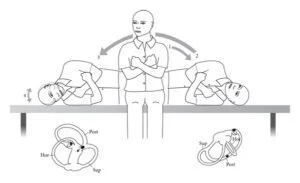
Exercise while walking
Make sure the path is clear of any dangerous corners or even things while doing this exercise.
Walking in a straight line.
Sitting as well as Standing
Sit straight on the chair & then slowly stand up.
Do this exercise 20 times. The patient must do this exercise with their eyes open initially. Once he/she feels the balance is improving, the patient can do this exercise with his eyes closed.
Throwing as well as Catching the Ball
Sit straight & throw a ball from one hand to another above eye level. do this exercise ten to twenty times per session. Do three sessions per day.
Half somersault maneuver
A half somersault maneuver is the alternative to an Epley maneuver & is comparatively more effective for some people. However, a higher number of half somersaults are required for relief from BPPV.
How to do the half somersault maneuver:
Kneel on the floor & then sit back on the calves while placing the palms on the floor just ahead of the bent knees.
Pull the back inward & tilt the neck upward to look at the roof. It is an embarking position.
Bring the body into the embarking position of the somersault by touching the top of the head to the floor right in front of the knees.
While staying in the somersault position, turn the head to the side that is most affected by vertigo such that the patient is looking at the corresponding elbow.
Raise the turned head and the rest of the upper body, & sit back on the calves.
Stretch the neck to lift just the head up above body level.
Return to the starting position.
Similar to the Epley maneuver, a half somersault maneuver can induce mild dizziness & therefore, should be performed in a safe environment.
Gaze Stabilization Exercise
How To perform this exercise:
First of all, sit on the mat or bed. Then, extend one arm with the index finger out. Next, look at an index finger for 15 seconds.
Turn the head to the right & left slowly with the eyes fixed on the tip of the index finger.
Do it for 10 seconds.
Move the head up as well as down with the gaze fixed on the index finger.
Do this exercise for 10 seconds.
Move the head diagonally up as well as down with the gaze fixed on the index finger. Do it for 10 seconds.
Do the same on the other side as well.
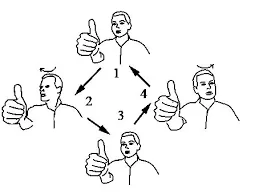
Romberg Stance
How To perform this exercise:
To start with, stand with your feet close. The patient may hold on to the wall or the chair. Then, close the eyes, and keep the head straight.
Hold it for 15 seconds.
Open the eyes & turn the head side to side. Do it for 10-15 seconds.
Move the head up as well as down. Do it for 15 seconds.
Repeat the steps with the eyes closed as well.
Single Leg Balance
How To perform this exercise:
To begin with, the patient should stand straight with the feet hip-width apart. The patient may hold the chair or the wall for support.
Lift the left foot off the ground, flex the knee, as well as balance the body weight on the right leg.
Hold it for ten seconds.
Repeat with the right foot.
If comfortable, the patient can move the head side-to-side & up as well as down while doing the leg balance.
Turn the head from side to side while walking.
Do the exercise ten to twenty times a session. Do three sessions per day.
Levator Scapulae Stretch
Raise the right elbow above a shoulder as well as rest it on the door jamb. Keeping the shoulders still, turn the head to the left & tilt a chin down toward the collarbone to stretch the back of the neck. Hold for 30 seconds. Then, repeat on the other side.
Chin Tuck
Sit upright as well as look straight ahead with the ears directly above the shoulders. Pull a chin & head straight back while keeping the eyes focused straight ahead. When a good stretch is felt at a top of the neck & base of the head, hold it for thirty seconds. Repeat up to three times. The exercise may also be performed while standing if comfortable.
Back Burn
Stand up straight with a back & head flat against the wall, feet shoulder-width apart. Hold the arms straight out to the sides at shoulder height with the back of the hands against a wall. Keeping the arms as well as hands against a wall, slowly slide the hands up above a head and after that slowly back down. Try to repeat ten times in one session. Do three sessions per day.
Prone Cobra
While lying face down on the ground or the yoga mat, place a forehead on the pillow or even a rolled-up towel. Raise the head, chest, as well as arms while keeping the elbows out to the side & squeezing the shoulder blades together. Keep the forehead at least an inch off the floor with the eyes looking downward (rather than looking up & overarching the neck). Hold for thirty seconds if possible, and the rest. Try to do three repetitions.
Safety Precautions To Take
Stand near the wall or handrail, set up the chair or walker, or use some form of support to maintain the balance.
Ask someone to stand close by as the patient does these exercises.
Do not use throw rugs. Instead, use the anti-slip mat.
Avoid sudden head motions.
Keep the ground dry to prevent slipping.
Store household items on low shelves to eliminate the requirement to climb or reach high.
Install grab bars near the bathtub as well as a toilet.
Do not rely on the exercises alone to treat vertigo. Seek medical attention to treat conditions like bacterial ear infections.
FAQ
Exercises and Maneuvers known as vestibular rehabilitation exercises (VRE) are sometimes suggested for certain types of vertigo, such as benign paroxysmal positional vertigo (BPPV). These exercises are often prescribed by a healthcare provider or physical therapist. The Epley maneuver is an example of a specific exercise that can be used to treat BPPV.
Begin by sitting up straight on your bed. Move your head to the side that is causing your dizziness by 45 degrees. Place yourself on one side and tip your nose upward while you lie there. Hold this posture for approximately 30 seconds, or until the dizziness subsides, whichever comes first.
Whether you’re seated or standing, hold a little card with text on it in a visible place. Turn your head slightly from left to right, but keep your eyes fixed on the card. Head movements should be regular and fluid. Keep going for a minute or two.
In the majority of cases, medications like prochlorperazine and some antihistamines can be helpful in the early stages of vertigo. Vestibular Rehabilitation Training (VRT) is a set of exercises designed to help persons with dizziness and balance issues. It is also beneficial for many individuals with vertigo.
A straightforward yet effective vertigo exercise is walking. It could facilitate better balance. You’ll be able to operate more independently when you walk with better balance, which might boost your confidence. Your muscles will be used when you walk.
Exercise-based vestibular rehabilitation has been shown to alleviate vertigo symptoms in adult patients with chronic dizziness, according to many studies. The two most popular exercises that your doctor could suggest as part of your vestibular rehabilitation therapy.
Avoid foods that high in sodium
In addition to staying away from the salt shaker, you should be careful of meals that have a high sodium content at first. Fast food, microwave meals, potato chips, and canned soups are some of the worst culprits.
Exercise-induced dizziness can also occur in cases of other balance problems, but with BPPV, the continual shifting of head positions is what causes dizziness. This is the reason why patients with vertigo frequently claim that exercises like yoga, swimming, weightlifting, and even jogging are completely avoided.


